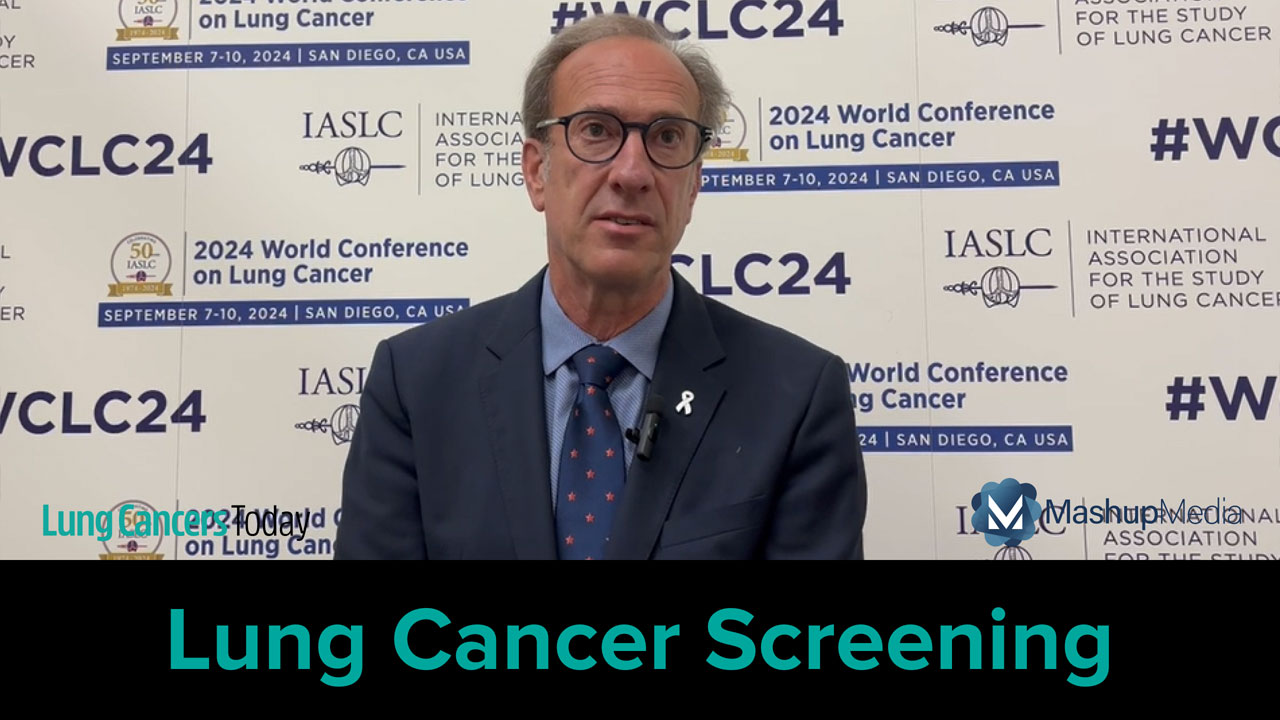Osimertinib and Uncommon EGFR Mutations: Real-World Study Provides Insights
By Jorge Nieva, MD, Cecilia Brown - Last Updated: September 27, 2024Jorge Nieva, MD, of the Norris Comprehensive Cancer Center and Keck School of Medicine at the University of Southern California, joined Lung Cancers Today at the IASLC 2024 World Conference on Lung Cancer to discuss his research. Dr. Nivea gave a poster presentation on the real-world evidence surrounding the use of osimeritinib in patients who have non-small cell lung cancer (NSCLC) with uncommon EGFR mutations.
“One of the great things about real-world evidence is it gives us an opportunity to see data without the expense of conducting clinical trials in a prospective manner, and it also gives us access to data from many more patients,” Dr. Nieva said. “We analyzed the Flatiron database and looked for patients treated in the United States with osimertinib who had some of these less common [EGFR] mutations.”
The study provided real-world insights into the EGFR mutations found among the population of patients with NSCLC.
“The interesting thing that came out of this work is that many patients have more than one mutation, and while some patients have common mutations, canonical mutations… some people have those mixed with the uncommon mutations and some people have uncommon mutations by themselves without the presence of the more common canonical mutations,” Dr Nieva said.
The study showed how outcomes with osimertinib varied among patients with common and uncommon mutations.
“The outcomes with osimertinib were different and much better if the patients had both a common and uncommon mutation than if they had an uncommon mutation all by itself,” Dr. Nieva said. “While osimertinib can be used for patients who have uncommon mutations alone or these compound common and uncommon mutations, we find that the patient outcomes are actually much better when they have both mutations.”
These real-world results have practical implications for the clinic and the broader population of patients with EGFR mutations, he said, noting that it provides insights into optimizing treatment selection for individual patients based on the types of EGFR mutations that are detected.
“More studies with real-world evidence are going to be very important for us to better understand the outcomes of patients who are treated in the real world,” Dr. Nieva concluded. “The real world has no exclusion criteria much like clinical trials do, and so really to get a good sense of what’s happening to patients who don’t fit the narrow inclusion and exclusion criteria of clinical trials, real-world evidence studies provide us with that snapshot of what happens in a much more varied population.”







 © 2025 Mashup Media, LLC, a Formedics Property. All Rights Reserved.
© 2025 Mashup Media, LLC, a Formedics Property. All Rights Reserved.